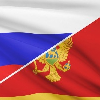Tsarev Bridge in Nikshich
This is an automatic translation.
Click here to read the publication in the original language.
In the second half of the 19th century, the town of Nikshich and the old Herzegovina, which had been liberated from the Turks, was decided to be connected by roads to the whole of Montenegro. With financial assistance from Russia, the construction of the Podgorica-Niksic highway was completed and a bridge was needed to cross the Zeta River in the lower part of the plain. At this point the river is widely spread during the spring flood, so the length of the structure was significant 229 meters ..
The project was developed by the famous Croatian architect Josip Slade.
The builders built the bridge from Montenegro and Boka Kotorska, and paid for their labor with grain, supplied free of charge from tsarist Russia. Considering the huge amount of work, soldiers of the Montenegrin army also worked free of charge on construction.
The elegant design of the bridge from the hewn stone was decorated with 18 arches, the height of the largest of which reaches 13 meters.
Prince Nicola, the future king of Montenegro, ordered to "gild" the bridge - to build in each support one gold coin. A huge amount of work was done in record time.
The first stone was laid May 23, 1894, and the opening of the bridge occurred on October 20. In gratitude for the help in the erection, the prince proposed to name the bridge in honor of the Russian emperor - the bridge of Tsar Alexander III. And the people had a shorter name - Tsarev Bridge. In a tragic accident, the solemn opening of the bridge coincided with the day of the death of the Russian emperor.
Currently, the bridge is not actively operated, as it is on the old road to Podgorica, 4.5 km from Niksic. But, like a hundred years ago, it remains one of the most significant engineering constructions of the country and is a symbol of friendship between the two Orthodox nations.
#mturchaninovaThis is an automatic translation.
Click here to read the publication in the original language.






































